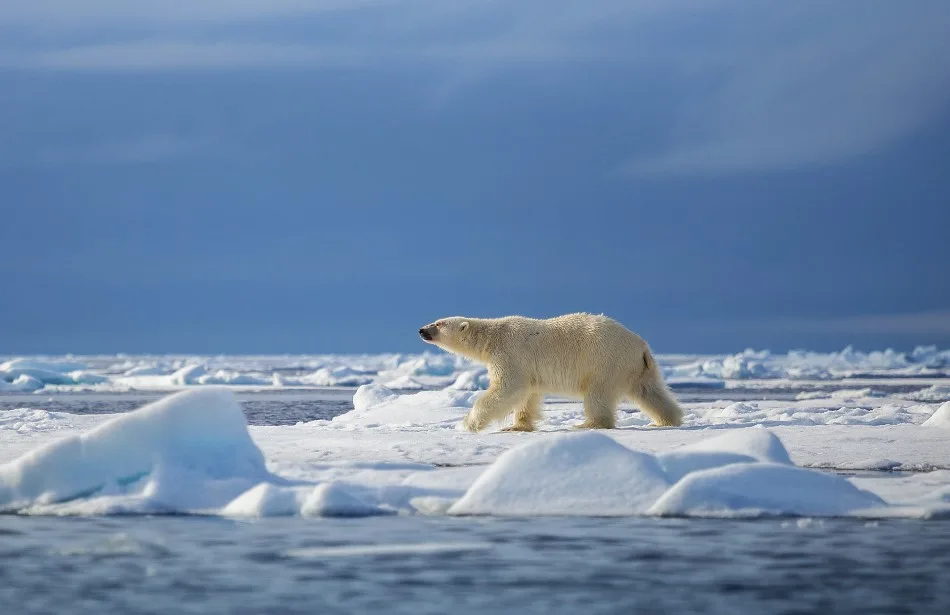Wildlife in Svalbard
Svalbard’s vast landscapes of rock, ice and sea provide a home for a remarkably diverse batch of inspiring creatures.
4 mins read
Sitting less than 600 nautical miles from the Geographical North Pole, Svalbard’s landscapes are typical of the High Arctic. Majestic fjords slice between ice-capped mountain ranges, and glaciers stretch for miles. In the tundra, vegetation finds a way through the permafrost. This pristine Arctic wilderness is home to some fascinating creatures.
Braving the tundra
As indicated by its name, the Svalbard reindeer is endemic to Svalbard. It’s the only reindeer subspecies to be found on the archipelago, with herds present in the unglaciated tundra of almost every island. They’re easily identified by their majestic antlers, and during much of the summer, you can see these antlers in different stages of growth.
Overeating in the summer
Winter in the High Arctic is a difficult time for a herbivore. Access to food is limited, and what they do manage to find may be of low quality. A Svalbard reindeer therefore makes good use of the summer, constantly grazing on the lush vegetation of the tundra. Similar to animals that hibernate in the winter, it builds up fat reserves that it can burn through when times are tough in the colder months.
The Arctic fox can also be found all across Svalbard. It has thick white fur throughout the winter, but in summer, look out for a shorter coat of brown or grey fur. This darker coat matches the rocks and plants of the summer tundra, providing camouflage when there’s less snowfall.
Arctic avians
Svalbard truly is a haven for birds, providing prime annual breeding spots for 41 species of seabird. Keep an eye out for Black Guillemots and Common Eiders drifting across the calm water of the fjords, and Brünnich's Guillemots breeding on the steep sea cliffs. Listen out for the squawk of the Glaucous gulls and the chirping of a flock of Little Auks. With an average length of 20 centimetres, this is the smallest auk species, and it can be found nesting almost everywhere in Svalbard.
A long-haul flight
About 40% of all bird species are migratory, but none match the migration of the Arctic Tern. It hatches in summer in the Arctic Circle, then leaves its breeding ground and flies all the way to the opposite side of the world, wintering in the Antarctic Circle. This distance of 30,000 kilometres is increased by the non-linear migration pattern, meaning that the Arctic Tern has the longest recorded migration of all birds.
Aquatic acrobats
The cold waters of Svalbard are home to several whale species. Beluga and minke whales are most common, but humpback and fin whales are also regularly seen. These immense sea mammals are surprisingly agile, sometimes throwing their entire bodies out of the water in an impressive acrobatic display.
You might even encounter the mighty blue whale, the largest animal that has ever lived on Earth. This ocean giant can blow up to 10 metres into the air through its blowhole, and it emits the loudest and deepest sound of any creature.
Pinniped paradise
Swimming in the waters of Svalbard are walruses and many species of true seal. These remarkable marine mammals are well adapted to life in the icy water. A thick layer of blubber insulates them from the cold, their nostrils close up while they dive, and they can even eat underwater! You might see bearded seals in a shallow bay, or shy ringed seals hauled out on the ice.
King of the Arctic
The polar bear is an iconic symbol of the North Pole. These solitary bears tower over adult humans, standing at a height of up to 10 feet (about 3 metres). With brilliant white fur that reflects the sunlight, they’re certainly an unforgettable sight. From a safe distance, you might catch a glimpse of one of these rare apex predators stalking a seal beside a glacier or swimming from one ice floe to another.
Strong swimmers
The only bears to be considered marine mammals, polar bears spend most of their lives on the sea ice. Their insulating layer of fat helps to keep them afloat while they swim. The longest known distance swam by a polar bear without stopping is 687 kilometres, completed over nine days! Although the bear survived the trip, she lost 22% of her body weight, as well as the cub she’d been carrying.
